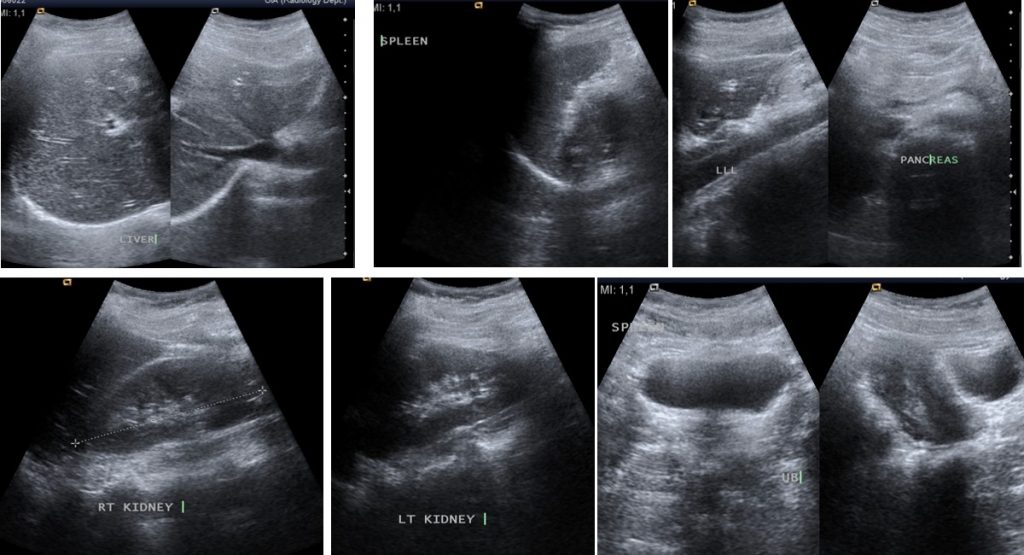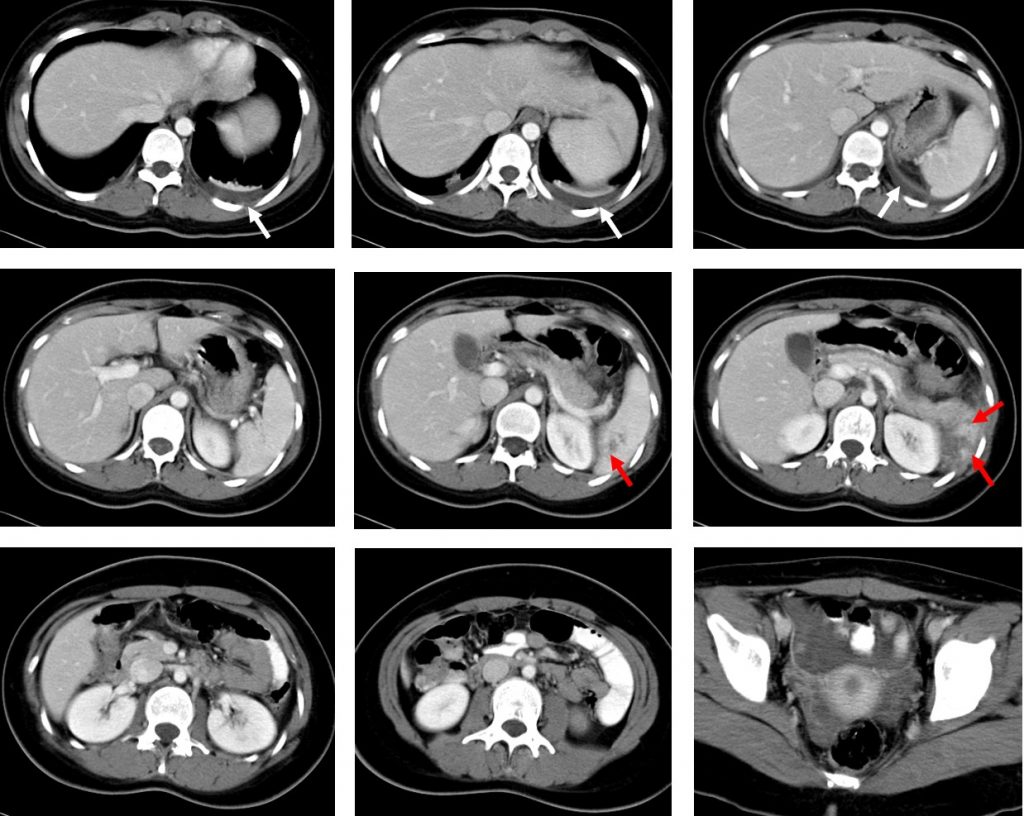Case contribution: Dr Radhiana Hassan
Clinical:
- A 20 years old lady with no known medical illness
- Involved in MVA, motorbike versus car
- Complaint of headache, chest discomfort and left sided abdominal pain
- BP=126/82 mmHg, PR=101 bpm, GCS=15/15
- Hb=12.2 gm/dL and Serum amylase was normal
- Admitted for observation. Cerebral concussion resolved
- Upper abdominal pain persistent
- Ultrasound abdomen done was reported as normal
- Hb drop from 12.2 to 11.8 gm/dL



CT scan findings:
- Left pleural effusion (white arrows) with bibasal atelectasis
- No lung contusion or pneumothorax. No rib fracture.
- Laceration at lower pole of spleen (red arrows) and intraparenchymal hematoma
- Minimal free fluid is seen surrounding the spleen
- Free fluid also seen at pelvic region.
- Other organs are normal. No evidence of bowel injury.
Progress of patient:
- Patient was managed conservatively
- No blood transfusion required during admission
- Discharged well 5 days later
Diagnosis: Grade II spleen injury
Discussion:
- The management of blunt spleen injuries has changed from mainly operative intervention, to the current practice of selective non-operative management.
- It is now the treatment modality of choice in hemodynamically stable patients, irrespective of the grade of injury, patient age, or the presence of associated injuries.
- Its use is associated with a low overall morbidity and mortality when applied to an appropriate patient population.
- All hemodynamically stable patients are treated with observation, serial abdominal examination, and follow-up abdominal CT scanning whenever necessary.
- This approach is selected even for higher grade of injuries (over 80% of grade 4 and 5 injuries were successfully managed nonoperatively).
